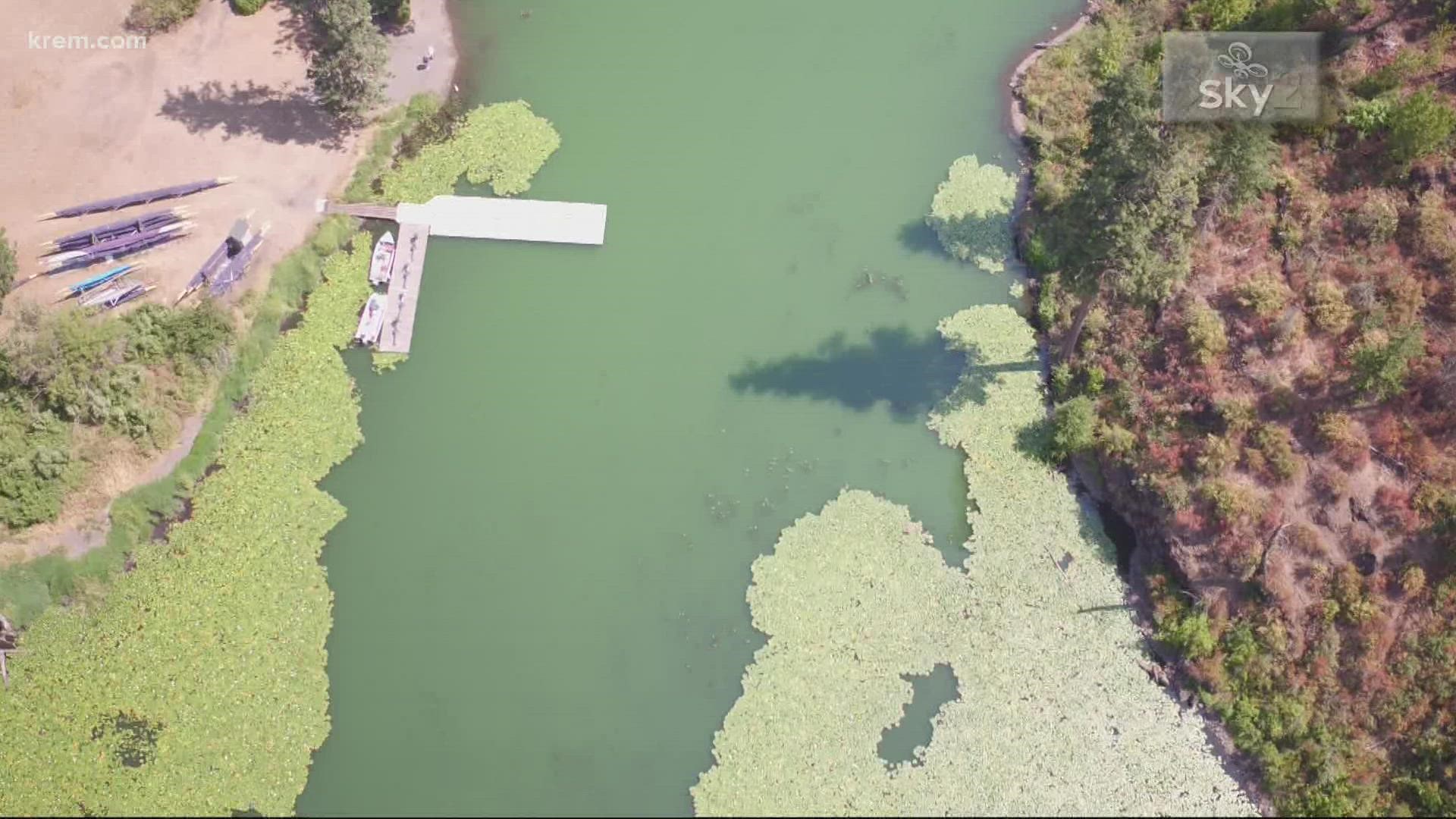CHATTAROY, Wash — Toxic blue-green algae blooms can make families and pets sick, and Washington is getting reports of it in areas where it hasn't been seen before.
The Washington Department of Health is now advising the public to take precautions while swimming.
Blue-green algae can be very dangerous to your pets. Last week, KREM 2 was the first to report three hunting dogs from Chattaroy died suddenly after swimming in the Little Spokane River. There were traces of blue-green algae found in the river but it is not enough to prompt a closure.
Now that health officials are reporting more occurrences of blue-green algae in Washington, we are breaking down what you need to know.
A likely indicator of blue green algae is if the water turns into a pea green color.
It is most commonly found in lakes. But blue-green algae can also occur in rivers and streams with warm, slow-moving and stagnant waters.
Dr. Frank Wilhelm is an expert on blue-green algae at the University of Idaho.
He said the usual suspects in Idaho are Fernan Lake, Sagle Slough and Comeback Bay areas and the northern portion of Hayden Lake. These are areas that currently have health advisories in place in North Idaho.
In Washington, the Department of Ecology lists eight lakes and ponds that are either closed or have warnings for the toxins found in the water:
- Anderson Lake
- Hicklin Lake
- Hourglass Pond
- Lacamas Lake
- Lone Lake
- Round Lake
- Rufus Woods Lake
- Spanaway Lake
None of the lakes listed are in Spokane County. Dr. Wilhelm said these blooms thrive on the severe heat we had this summer.
"These organisms can be very, very tolerant of high temperatures,” Wilhelm said. “The warmer it gets, the better they do. So they have a competitive advantage of very high temperatures in very low flow."
He said there is currently no antidote for exposure to blue-green algae.
Symptoms people may experience from ingesting or skin contact of blue algae vary. One could experience common cold and flu symptoms, which can go undetected because of the similarities. Someone exposed to the algae could also develop a skin rash that can clear up in a day or two.
These are all reasons why Dr. Wilhelm said lake goers should follow warnings posted at their local watering hole.
“People should heed those warnings because there’s that risk of ingesting a fatal dose,” Dr. Wilhelm said.
He adds that the recent increase in algae blooms is a concern for him and should be a concern for the public. In the past it’s taken about two weeks to 100 days for health advisories to be lifted, if not more, which is why he believes it’s better to be safe than sorry.

